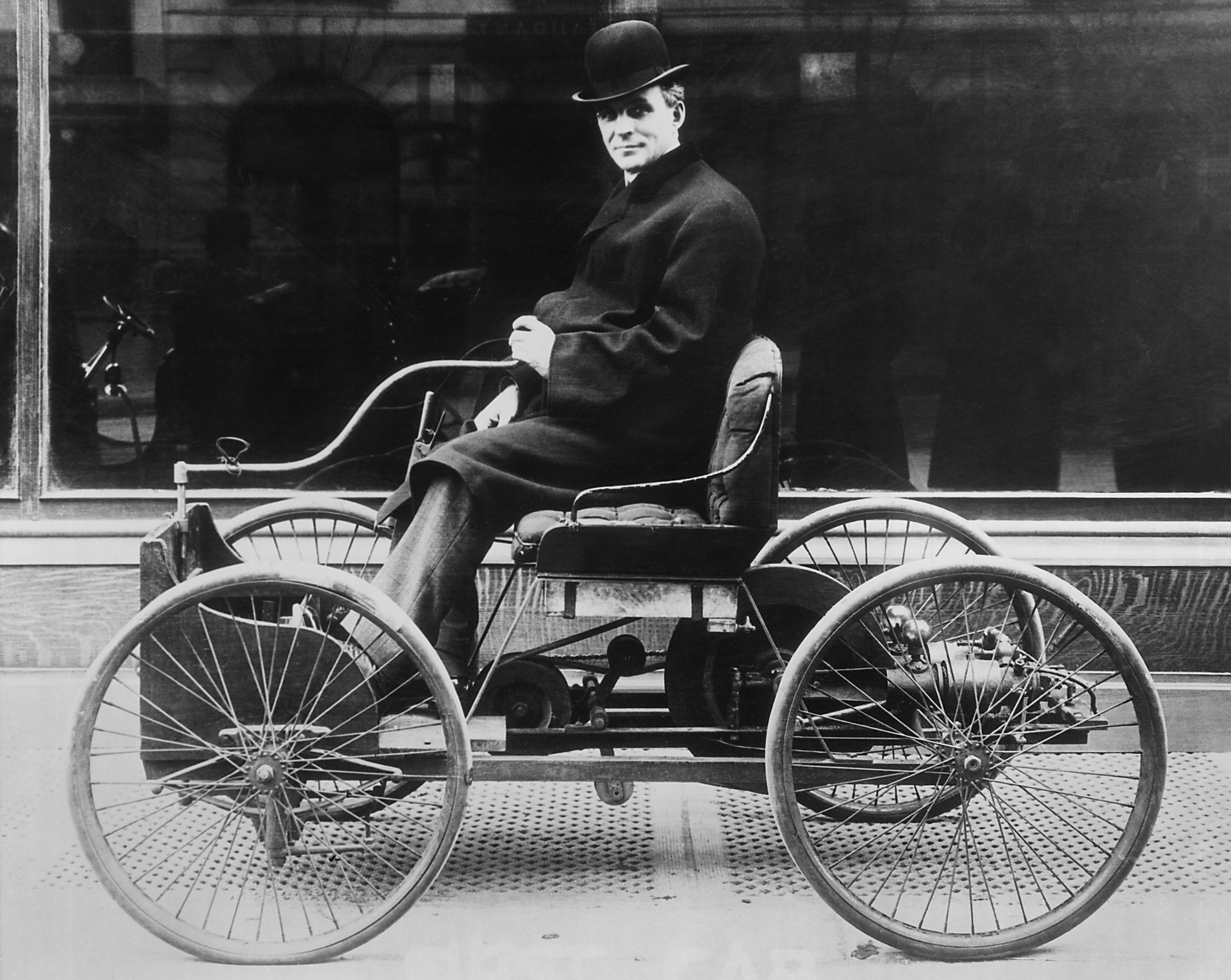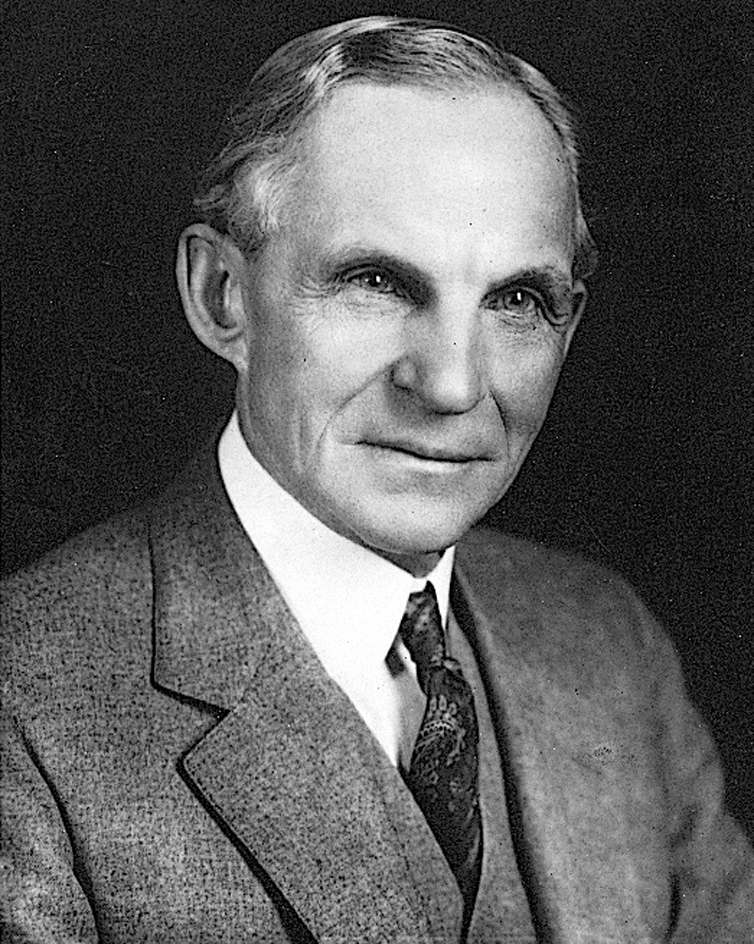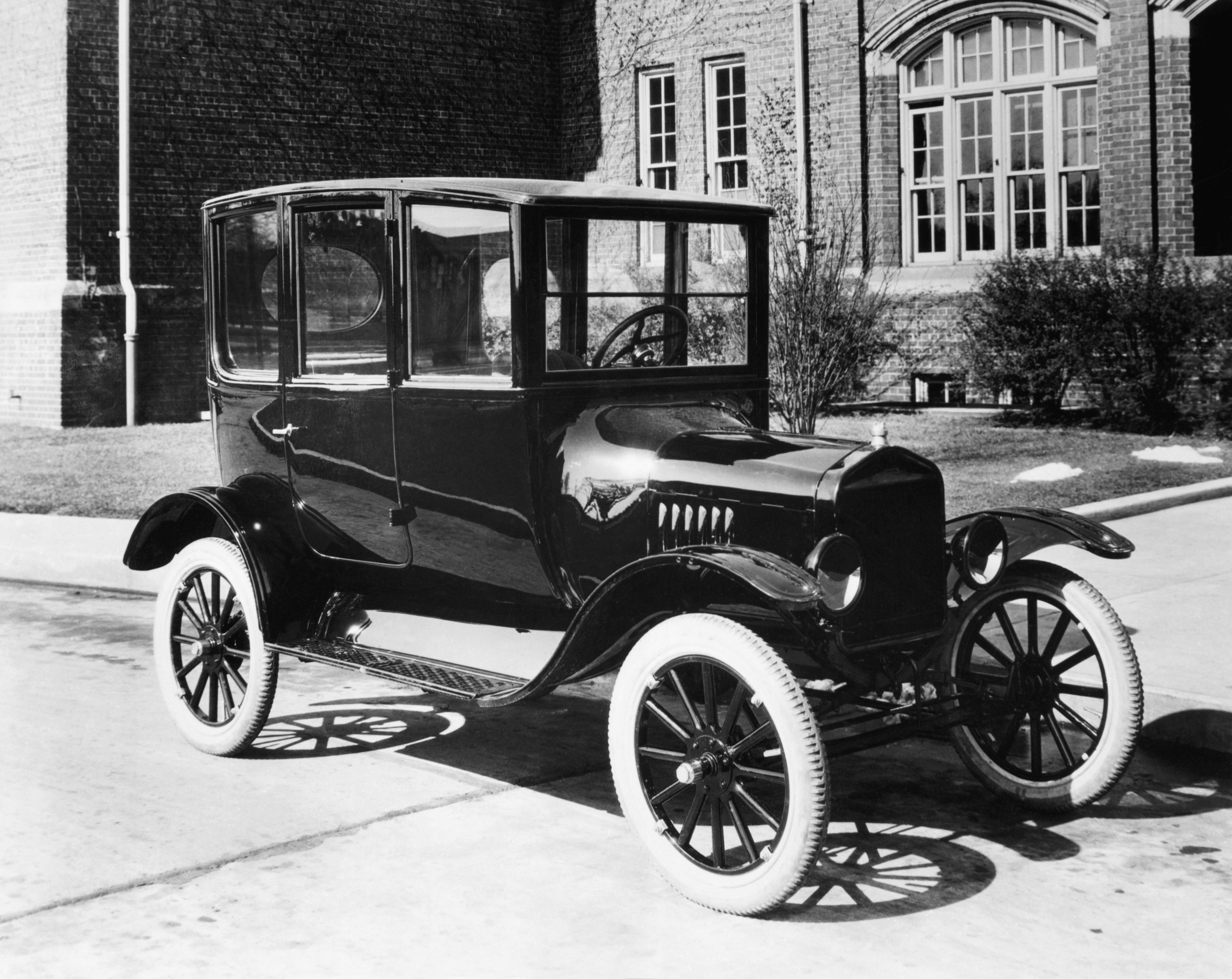Ford, Henry (1863-1947), was the leading manufacturer of American automobiles in the early 1900’s. He established the Ford Motor Company, which revolutionized the automobile industry with its assembly line method of production. The savings from this technique helped Ford sell automobiles at a lower price than anyone else. From 1908 to 1927, more than half the cars sold in the United States were Fords.

Early life.
Ford was born on July 30, 1863, on a farm in what is now Dearborn, Michigan. He became a machinist at the age of 16 and later worked as an engineer at a Detroit electric company. As a young man, Ford became interested in a new invention, automobiles. He built his first successful gasoline engine in 1893 and his first automobile in 1896.
Industrial accomplishments.
In 1903, Ford organized the Ford Motor Company. Like other automobile companies, Ford produced only expensive cars. However, Ford soon began working to make a simple, sturdy car that large numbers of people would be able to afford. He achieved one of the first such cars with the Model T , which appeared in 1908. In 1909, Ford decided to produce only Model T’s.

Henry Ford makes an affordable automobile
Priced from $825 to $1,000, the Model T was initially too expensive for many customers. To lower the price, Ford and his executives tried new ways to reduce production costs. For example, the company created an assembly line method in which conveyor belts brought automobile parts to workers. Each worker performed a particular task, such as adding or tightening a part. This system helped reduce the assembly time of a Ford automobile from about 121/2 worker-hours in 1912 to about 11/2 worker-hours in 1914.
Ford Motor Company began to produce its own parts instead of buying them from independent suppliers at a higher price. Ford also shipped automobile parts, rather than assembled automobiles, to market areas, where assembly plants put the parts together. Parts cost less to ship than whole automobiles did. In addition, the company began to make its own glass and steel.
As the company’s production costs fell, Ford passed much of the savings on to his customers. The price of a Model T touring car dropped to $550 in 1913, $440 in 1915, and $290 in 1924, putting the automobile within reach of the average family.
In 1914, Ford raised the minimum wage to $5 a day for his employees 22 years of age and over. This rate was more than twice what most wage earners received. Ford also reduced the workday from 9 to 8 hours. Workers flocked to Ford plants seeking jobs, and Ford could choose the hardest-working and smartest ones. To encourage productivity, Ford introduced a profit-sharing plan, which set aside part of the company’s profits for its employees.
During the mid-1920’s, Ford continued to produce the Model T even though its popularity had declined. Meanwhile, the General Motors Corporation (GM) gained an increasing share of the U.S. automobile market. GM offered a wide variety of models equipped with many luxuries. GM also introduced new designs yearly and advertised its cars as symbols of wealth and taste. Ford, however, continued to offer only basic transportation at a low cost. The Model T changed little from year to year, and from 1914 to 1925, it came in only one color, black. 
Ford finally introduced a new automobile design, the Model A, in 1927, after more than 15 million Model T’s had been sold. In 1932, Ford introduced the first low-priced car with a V-8 engine, a powerful engine that had eight cylinders arranged in a V-shaped pattern. By that time, however, GM had taken the lead from Ford Motor in U.S. auto sales. Ford Motor declined throughout the 1930’s, and some people began to question Henry Ford’s management skills. In 1945, Henry Ford II, one of Ford’s grandsons, took over the company.
Political and charitable activities.
Ford had long taken an interest in political affairs. In 1915, during World War I, he and about 170 other people traveled to Europe at his expense to seek peace. The group, which lacked approval by the U.S. government, failed to persuade the warring nations to settle their differences.
In 1918, the year the war ended, Ford ran as a Democrat for a Senate seat from Michigan. He lost the election and did not seek public office again, but he continued to speak on political issues. Ford was anti-Semitic (prejudiced against Jews). He published newspapers and books that attacked Jews. He also opposed labor unions. He fought attempts by the United Automobile Workers (UAW) to organize his employees.
Ford devoted much time and money to educational and charitable works. He established Greenfield Village and the Henry Ford Museum, both in Dearborn. The village is a group of restored historical buildings. The museum includes exhibits in science, industry, and art. In 1936, Ford and his son, Edsel, set up the Ford Foundation, one of the world’s largest foundations, which gives grants for education, research, and development.
Ford wrote four books with author Samuel Crowther. They are My Life and Work (1922), Today and Tomorrow (1926), Edison As I Know Him (1930), and Moving Forward (1931). Ford died on April 7, 1947.
